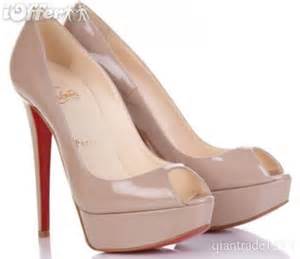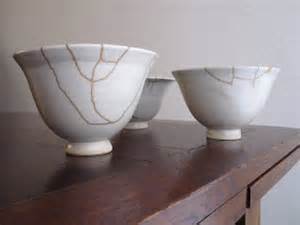
I had the amazing opportunity to spend 2 weeks in Rome this year which is a city of history, art, passion, and appetite. Among the many, many things Italy does well are shoes.
The best thing about shoe shopping in Italy was something that actually stunned me. They sell primarily sensible shoes. I realized that in America when I look for shoes most stores have about 70% high heels to 30% shoes the average 40 year old could comfortably walk in for a few hours (excluding trainers or athletic shoes, which are their own category). In Rome, the proportions were flipped – 70% walkable, low heel shoes, 30% high perilous heels. And the walkable shoes were stylish, meaning that all women, young to old, had cool shoes and the I-am-comfortable-moving-through-the-world attitude that went with the actually comfortable shoes.
Now sure, Rome has cobblestone streets so ladies in the high heels are taking serous risks with their ankles. But it really struck me, how far we in America have gone down this road of foot torture and high heel extremes. Searching for a “sexy shoe” will have one wading through hundreds of 4 inch heels or higher and it can seem like shoe designers consider 2 inch heels not worth the effort to make look hip in any way. Celebrities are regularly seen in 8 inch, even 11 inch heels. Well designed? Maybe. Comfortable? Doubtful. The idea that beauty or sexiness is something you have to be willing to hurt for seems to be gaining more of a hold.
I know for me that wincing while I walk or breaking into a cold sweat while trying not to think about my feet just standing still, is not sexy. I, too, am drawn in by the angle of a foot and tensed leg in a high heel. Sexy to look at. Well suited to being off your feet, which can be sexy. But limiting. It is also sexy to dance for hours, to hop on bikes and go somewhere secluded, to walk for hours and eat gelato after dark (did I mention the gelato? Oh man.) Sexy is being free to move. Sexy feels good.
Let’s say that again because I don’t think we hear it enough. Sexy feels good. Hmmm, I feel like dancing.

I have been doing a lot of radio appearances lately to promote The Conscious Sexual Self Workbook, and a question that keeps coming up is – how can we make it easier to talk about sex? Even radio hosts, who talk for a living, share with me that they start to blush and find it hard to get the words out when it comes to sex. I help people have these conversations every day. Here are some ways to set yourself up to have a better experience.
Acknowledge That This May Be Awkward – Much of our embarrassment about sex comes from an adolescent, and unrealistic, feeling that everyone else seems to have this sex thing all together and if you are not playing it completely cool, you are failing. Give yourself and your partner permission to be awkward, to stutter, to not know the answers. Maybe you even have to stop and take a break for a bit. Don’t feel that you have to play a part, be genuine, even genuinely embarrassed, it takes the pressure off.
Don’t Try to Have a Challenging Conversation Right After Having Sex – Rolling over and relaxing or critiquing what just happened – um, go with relaxing. Even if the experience wasn’t what you hoped, keep in mind that post- sex people tend to be a bit vulnerable, making it a great time to share loving words, less great for problem-solving. Make time to have a conversation when you can feel close, awake, and can really focus on listening to each other.
Start With the Positive – Figure out what has been working for you, what do you like about sex? Asking for something you feel good about sets a tone of excitement and potential. As you start to share about something that isn’t working as well or that you would like to change, continue thinking about what you do want. What do you want more of? What would you like instead? Often people just say, “I don’t like it when you…” leaving their partner feeling like the lists of things they can do just shrunk. Certainly say if something is a clear No to you. But keep sharing your YESs too, they are equally important.
Make Contact – Touching your partner is soothing and studies have found that couples report less stress during conversations when they are holding hands. If it feels okay to do so, reach out and touch their leg or arm. Have the conversation cuddled up or while rubbing each other’s feet. Remind yourselves that you are connected by physical contact. This can also help with connection when eye contact feels too intense.
Don’t Expect to Figure it All Out at Once – Often sexual conversations open up questions, new invitations that have to be considered, edges that may take some time to approach. Pressuring yourself or a partner to come up with clear answers right away will only led to one level of growth. Embrace, “I am not sure, I need to think about that for awhile”. Then take the time to get to be curious about yourself. And then keep talking.

The other day I was trying to fix a broken figurine that had sentimental value for me. Applying glue, taking the two tiny pieces and fitting them back together, some chips still visible unable to be covered. I found myself pressing the two broken pieces together tightly, as though this would somehow get them to adhere more quickly. Now, I know this contradicts the way I understand glue to work – pressure doesn’t speed dry time. Yet, there I was pressing harder. It became clear quickly that all this was doing for me was causing the pieces to come apart was soon as the pressure was released, meaning I had to start over, more glue. After a few irrational tries, I settled into the realization that slow and steady pressure was the way to go. I needed to hold it gently in place just allowing contact between the two parts. I sat patiently in the sun, for a minute or two, just holding and breathing. Afterward I was unsure why I tried to rush the process.
But so often when things feel broken our impulse is to fix them quickly, to push into the problem so that it might yield under pressure. But like the glue, many repairs take their own time and need gentle handling. In therapy I see people come in valiantly committed to healing, getting past something, repairing damage of all kinds. Sometimes their commitment to fixing also includes a willingness to hurt themselves, to push past their own limits, to force something to happen. Meanwhile growth has its own pace. Sometimes healing takes gently holding something broken in our hands or hearts, bringing it out into the sun, and breathing slowly while we wait to feel something adhere, something unseen take hold again.
Healing does take courage and a willingness to face painful or frightening aspects of life. But it doesn’t require self harm and it doesn’t respond more quickly under pressure. I struggle with being gentle with myself, so I return again and again to lessons about allowing. When I can be mindful of this, there is a spaciousness that surrounds each problem and a sense that effort is not the answer, understanding is. Healing in a relationship requires gentle contact with one another, without force or rushing. Letting the two separate selves touch, close enough that the mysterious thing that holds them to one another can grow strong again, strong enough to hold them together invisibly. It takes time. Meanwhile things are mending, connecting again, becoming less fragile.
What do you need to make time to hold gently today?